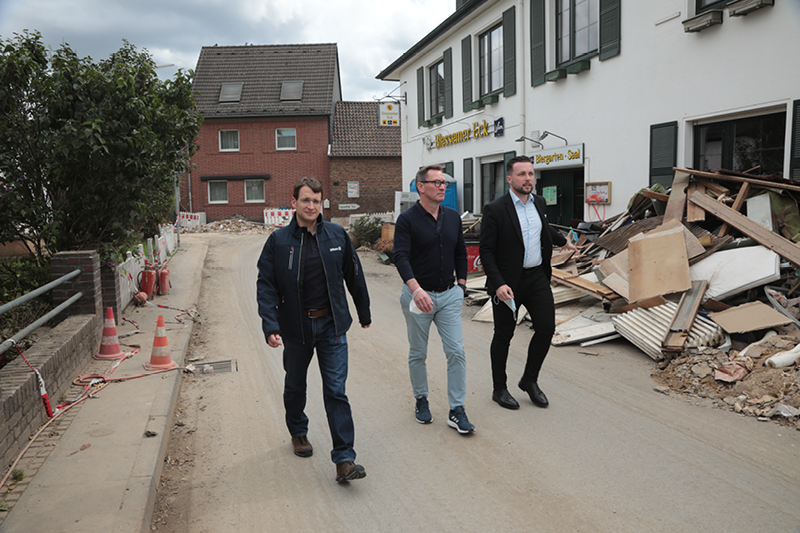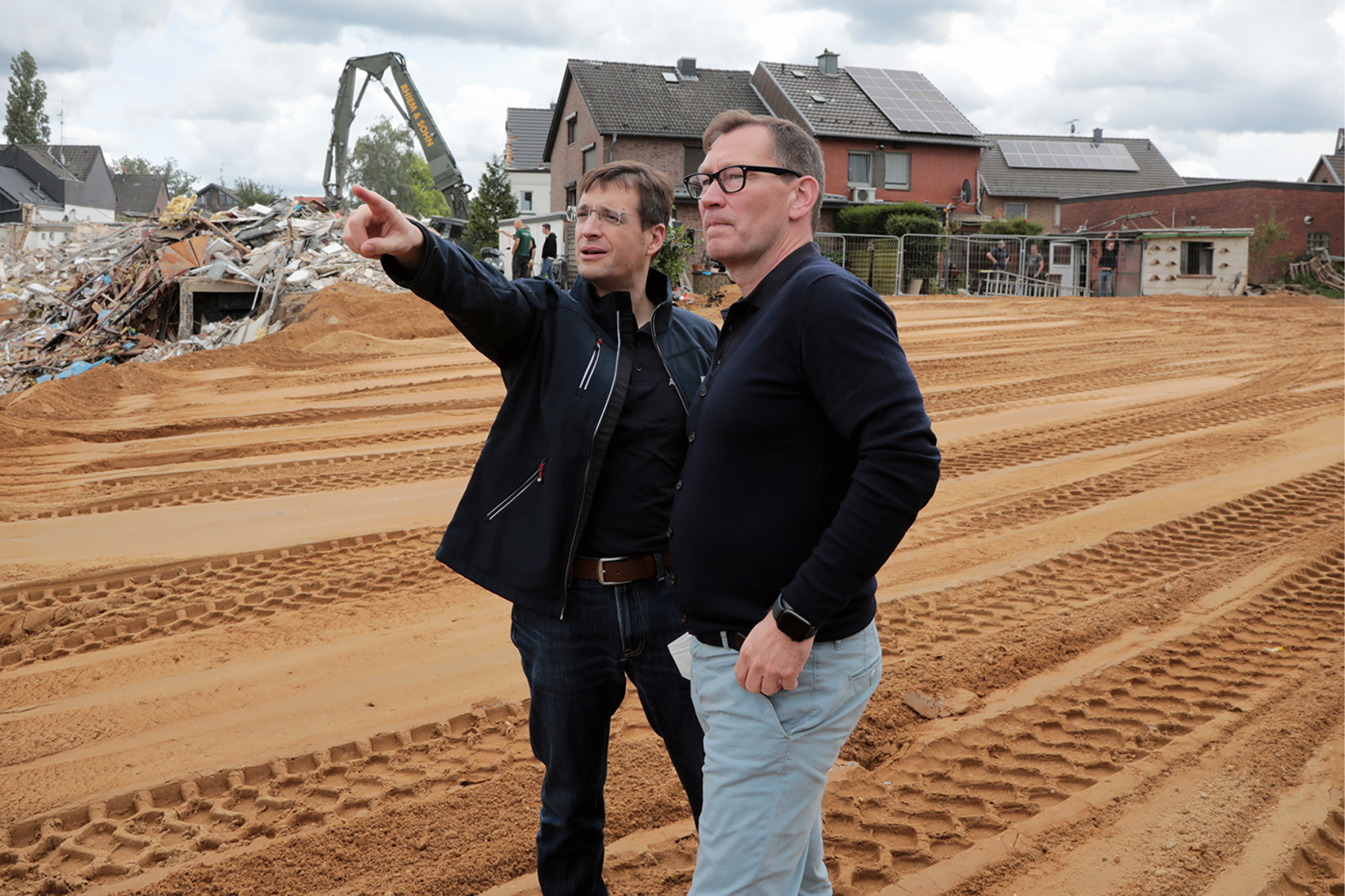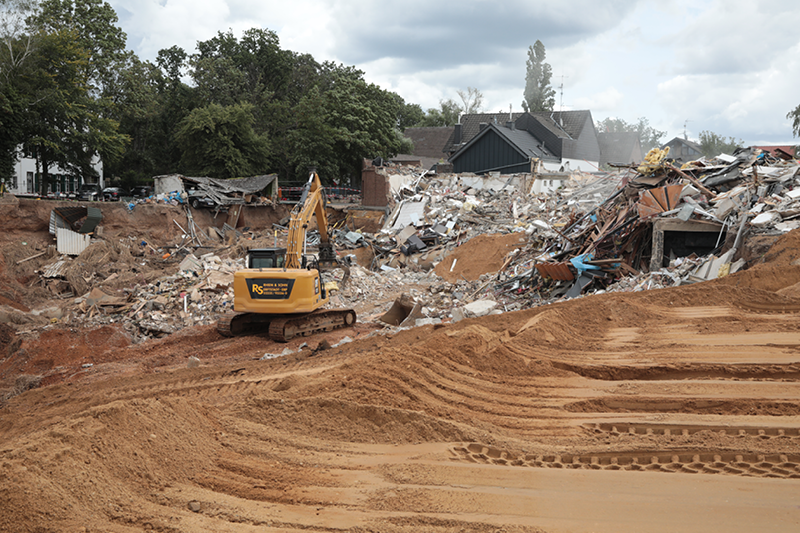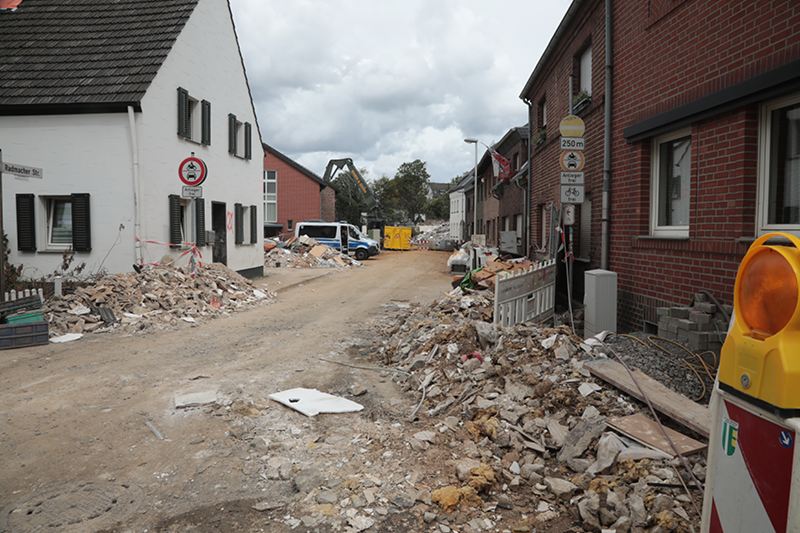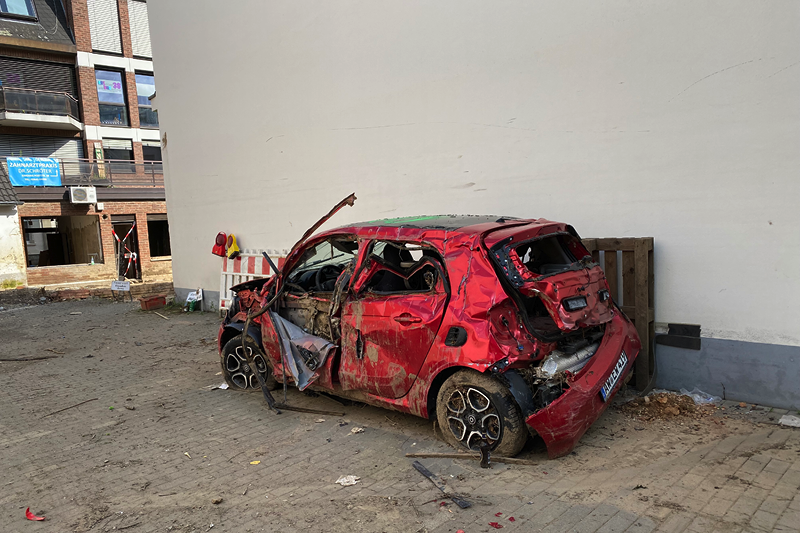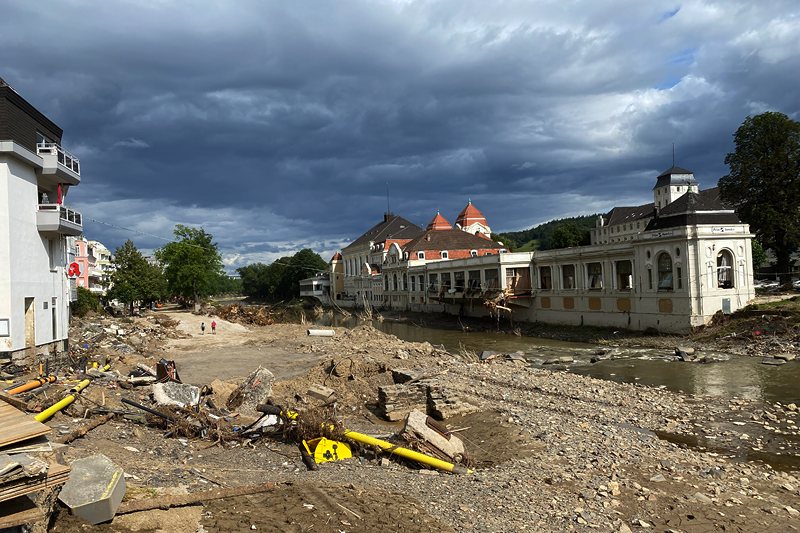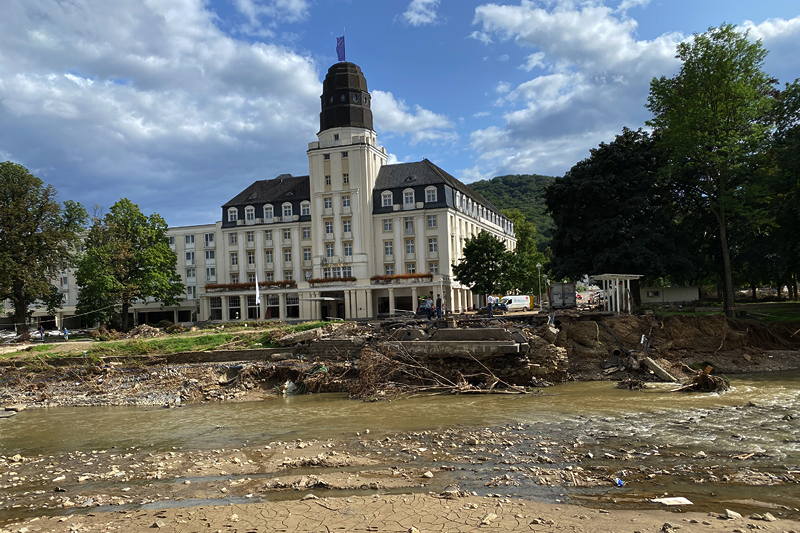A year after the devastating flood, the Ahr valley region in Germany still resembles a construction site and claims settlements in some cases are still being resolved. Allianz’s Versicherungs AG Board Member Jochen Haug explains why this is the case and why he sees “light at the end of the tunnel.”
the low-pressure weather system Bernd devastated parts of Germany, Belgium, and the Netherlands, causing an unprecedented catastrophe that claimed the lives of more than 180 people. Particularly affected was the Ahr valley in Western Germany, with entire villages destroyed by the flood.
A year later, the region still resembles a construction site and claims settlements in some cases are still being resolved. Allianz Versicherungs AG’s Board Member Jochen Haug explains why this is the case and why he still sees “light at the end of the tunnel.”
Mr Haug, looking back now, a year on from these events, what is your first thought?
The scale of the disaster was extreme and not comparable to other serious events we have seen here in recent years. I was particularly affected by the immense human tragedy that came from the disaster. You only really realize what that means when you are on site. I had spoken to many customers and there were many who had lost family members, friends, or neighbors. Our local representatives were also severely affected, with their families, houses or agencies caught up in the flooding. The stories heard from people who experienced this night and the following days will not be forgotten.
But what also impressed me very much was the great generosity. Whether it was tidying up, furnishing emergency kitchens, or making monetary or in-kind donations, the response was incredible.
What were the challenges in settling claims?
Immediately after the disaster, we had to think in a completely new way: in the Ahr valley, the infrastructure was destroyed, entire areas were cut off, with no phone or internet connection. How can we reach our customers and representatives? Who is affected and how? What is needed urgently? That was a completely new situation for us.
The very next day, we pulled together our claims adjusters from all over Germany and sent them to the affected regions. It was clear to us that we had to prioritize. A flooded cellar is a nuisance for the customer and here too a quick and uncomplicated claims settlement was important. But others were left with nothing. Either their houses were badly damaged or no longer standing at all. So we initiated an immediate payment of up to 10,000 euros for a claim report from severely affected customers – without any proof having to be submitted. …we initiated an immediate payment of up to 10,000 euros for a claim report from severely affected customers – without any proof having to be submitted.
The essentials could be bought and a hotel room or a holiday apartment could be rented. In addition, our representatives pointed out that everything was wet and there was no electricity. With the help of our Allianz Handwerkerservice (handyman service; English), we bought around 2,000 drying machines and more than 100 generator sets and transported them to our customers in the region. Our local representatives organized the distribution because they knew where the equipment was urgently needed.
It sounds like everything was perfectly planned.
Of course, we are prepared for severe natural disasters. But Bernd posed special challenges and showed us where we needed to change or adapt our processes. In order to make quick decisions, we set up a cross-functional crisis unit. For example, the decision to purchase emergency power generators and drying equipment could be made without large coordination loops. Our representatives on-site recorded the damage to the customers.
But how do we ensure that these reports and the information on what is most urgently needed get to Allianz and the crisis unit on time? Again, this was a situation haven’t experienced before.
Office employees drove or ran to the villages to pick up the documents because sometimes the places were not yet accessible by car. It was an extreme situation. All of this was, on an emotional level, enormously stressful for everyone on-site. That’s why we set up a psychological support hotline that gave our customers, employees, and representatives a space to talk about their experiences.
A year has passed since; have all related claims been completed in the meantime?
Motor vehicle and household contents damage are almost completely closed and, in the case of building damage, more than 80 percent of claims have been completed. With the missing almost 20 percent, we are on the right track and assume that the essential restoration and housing of the buildings will be carried out by the end of the year.
Here, one must not forget that a destroyed or washed away vehicle or household items can be easily paid out as a total loss. With a damaged or destroyed building, the situation is different. Should and may it be rebuilt in the same place? When is the building permit available? Electricity and water connections as well as the public infrastructure must first be restored before further steps can be planned. A complete drying of a building takes months, provided there is electricity and a drying device. Many craftsmen in the region were affected themselves and order books were oftentimes full.
With the help of Allianz Handwerkerservice we were also able to provide support from other regions of Germany and the necessary material must also be available and accessible. But, as one customer we spoke with in a video report (see above) said: “You see a light at the end of the tunnel.”
